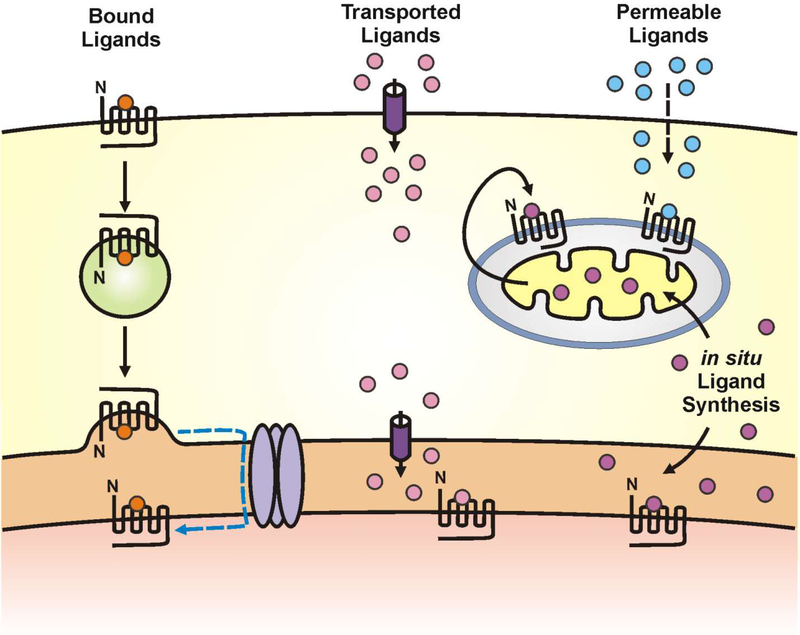Fig. 2.
Ligand activation of intracellular GPCRs. Intracellular GPCRs can be activated via receptor-bound ligands (left) that can be internalized with a given GPCR such as F2rl1 receptors (16). Alternatively, channels, transporters or exchangers (middle) can transport specific ligands across the plasma membrane and even intracellular membranes to activate receptors whose ligand binding domain faces the endoplasmic reticulum (ER) or nuclear lumen such as glutamate in the case of mGlu5 or organic cation transporter 3 (OCT3) for norepinephrine activation of α1-adrenergic receptor (α1-AR) (3, 125). Permeable ligands such as endocannabinoids can freely diffuse across cell membranes to activate their corresponding receptor (right). Ligands can also be synthesized within the cell (lower right) and either diffuse or be trafficked to a given cellular compartment.

